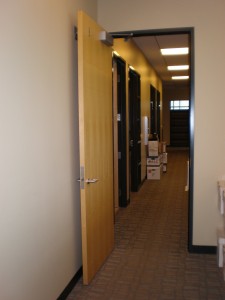Recently added item(s)
You have no items in your basket.

When is a door, not just a door? When it’s a fire door. Fire doors are a critical element in fire safety and a requirement in every commercial, public and multiple occupancy building, yet their importance in saving lives is often overlooked.
The simple purpose of a fire door in every day use is just the same as any other door. However, since a breakout of fire is never predictable, the fire door, unlike any other door, is then required to perform its prime purpose as part of a building’s passive fire protection system allowing all rooms to be separated or compartmented from other rooms in order to:
• contain a fire in the compartment in which it starts
• protect the occupants (and contents) of other compartments
• provide a safe, protected route to allow the buildings occupants to escape.
Given that fire doors play a major role in the fire safety and protection of buildings, once a fire door has been correctly installed, it is critical that it is also then correctly used, inspected and maintained. Failure to do so can place property and lives at risk, and may even result in criminal prosecution.
As a building occupier or tenant you are best placed to notice the state of the fire doors in your premises and there some simple checks you can - and should - undertake as follows:
1. Look for a label or similar marking to show that it’s certificated
2. Ensure the door closes correctly around all parts of the frame and that the closer is fitted securely
3. Check the hinges are firmly fixed into the door and frame with no missing screws
4. Make sure the door is not damaged or wedged / propped open
5. Check that the door is marked correctly with the appropriate signage
If you have any concerns about the safety of the fire doors in your building, you should report these to the building manager, landlord or property maintenance department, as the ‘responsible person’ without delay.
Under the Fire Safety Order, they in turn, must ensure that all fire doors are inspected as part of a building’s fire safety risk assessment and fire management plan. This means checking at least every six months that all fire doors are working correctly and are properly maintained – and as often as every three months in a building with high traffic where fire doors are heavily used.
So if you are a building owner or manager and the ‘responsible person’, what should you be checking the fire doors for? The British Woodworking Federation has prepared these helpful guidelines and checklist but ideally you should arrange for your fire door inspections to be undertaken by a trained expert who will also be able to advise on any safety or non compliance issues and the action required to rectify them.
You can find more information on the Fire Door Inspection Scheme at www.fdis.co.uk and the UK Fire Door Installer Register is a new industry-led initiative backed by the UK's leading fire door experts, associations and organisations, which aims to bring greater recognition to professional fire door installers and to help building owners who need to find qualified and certified people they can trust.
In part 2 of this blog, we will look at the various elements of door furniture and fittings that make up a fire door and the part they each play in ensuring a building’s passive fire protection is effective.
Life is precious and property and assets matter. For help and advice on all fire protection and safety products, please contact the Fire Depot team on 0330 999 2233, email us at sales@firedepot.co.uk or visit www.firedepot.co.uk to see our range of fire safety products.